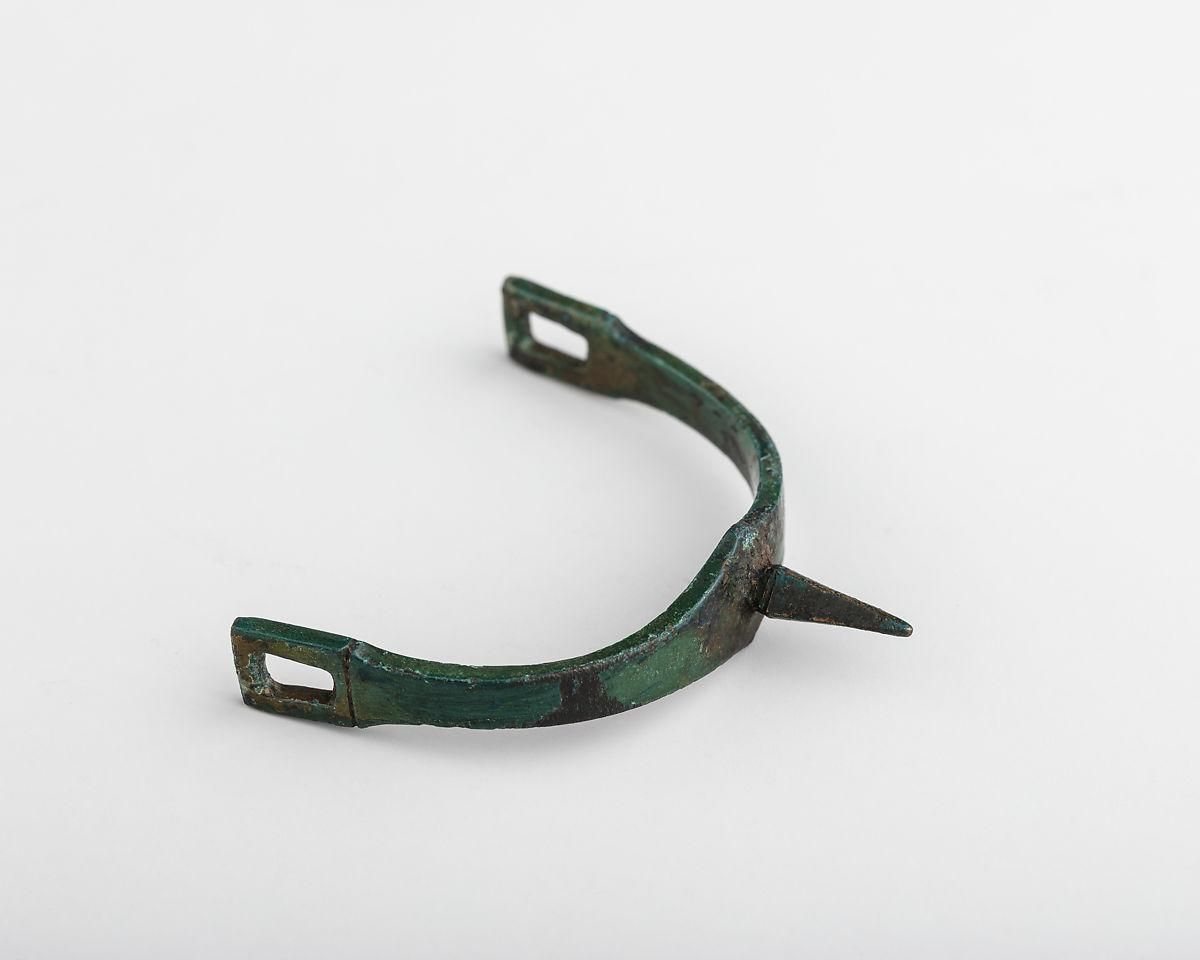
Prick Spur
Unknown Artist
This type of spur has been found in several Italic burials, as well as some Greek sanctuaries, from the late 5th century B.C. onwards.
In high antiquity, spurs were not used in pairs, but rather as a single accessory attached to only one of the feet, usually on the left. The first pairs are recorded in some Greek regions in the late 2nd century B.C. They were used, as they are today, for directing a horse to move forwards. The prick spur was the first type of spur to be invented, and it consists of a goad or prick, more or less pointed, connected to side arms or a heel plate. The earliest spurs were probably simple thorns attached at the back of the heel or ankle, before they began to be made out of metal.
Credit: Gift of Stephen V. Grancsay, 1942
4th-1st century BCE
Copper alloy (bronze)
5.7 x 6.0 cm
42.50.246
Image and text © Metropolitan Museum of Art, 2025
Where you'll find this

Permanent collection
